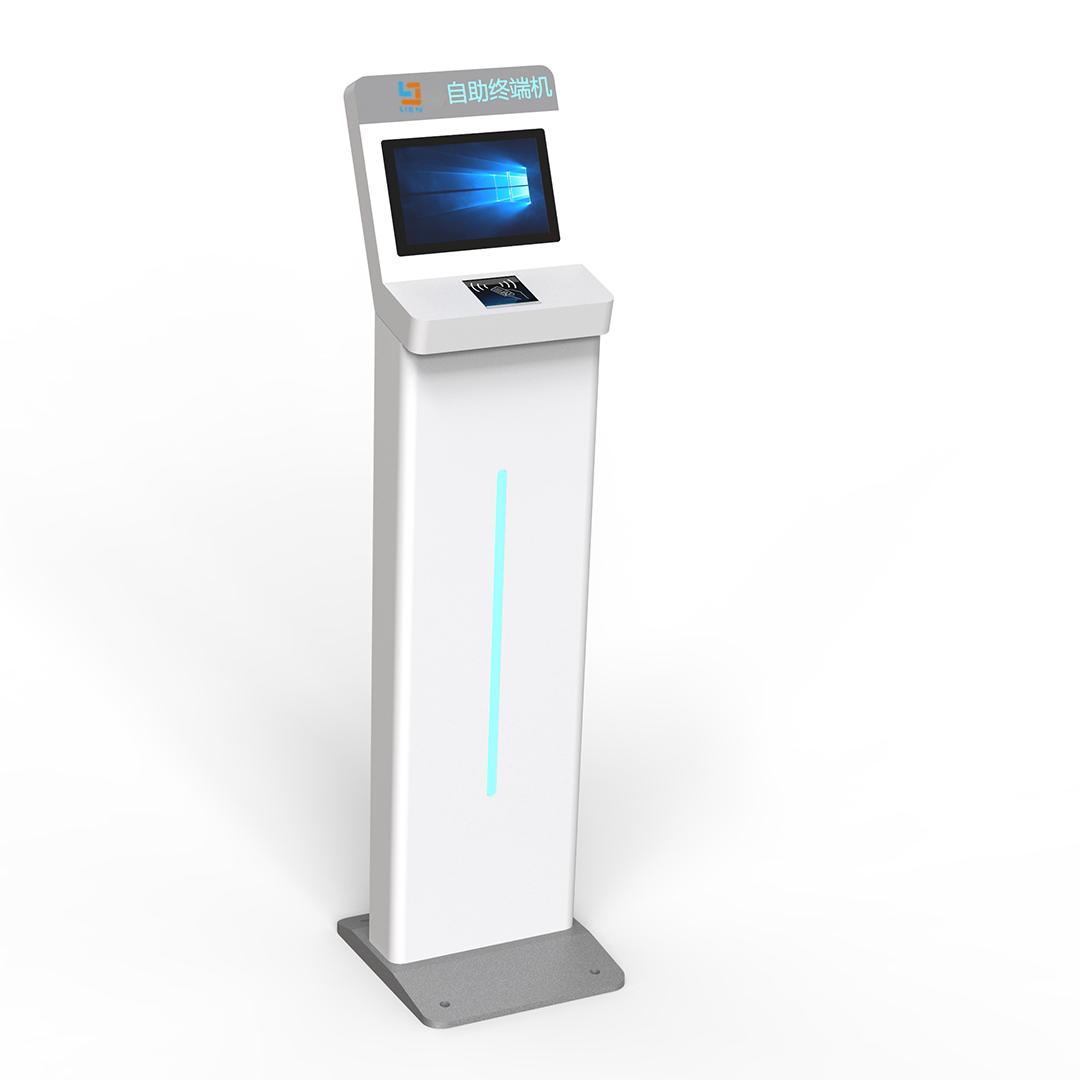A visitor kiosk is an automated self-service device designed to streamline the check-in and management process for visitors in various settings such as offices, hospitals, hotels, and other public spaces. These kiosks typically provide services such as visitor registration, badge printing, information dissemination, and wayfinding. They are designed to enhance visitor experience, improve operational efficiency, and ensure security and compliance.
1. Touchscreen Display
| 2. Barcode Scanner
| 3. Printer
|
4. Card Reader
| 5. RFID Reader
| 6. Camera
|
7. Audio Output Devices
| 8. Network Connection Module
| 9. Durable Enclosure
|

Common operating systems include Windows, Linux, or Android, providing a stable running environment and diverse development interfaces.
Custom-developed visitor management applications responsible for interface display, user interaction, and data processing. Designed in a modular fashion to facilitate feature expansion and updates.
Responsible for device monitoring, data collection and analysis, content management, and system maintenance. Provides remote monitoring and management functions to ensure the normal operation and timely maintenance of the devices.
Stores visitor data, transaction records, and log information. Common database systems include MySQL, PostgreSQL, etc.
Uses TCP/IP protocol to exchange data with the backend server through wired or wireless networks. Supports VPN and other secure connection methods to ensure data transmission security.
Includes firewalls, encryption modules, authentication systems, etc., to ensure the security of data and user information.
Provides interfaces with visitor management systems, security systems, and customer relationship management (CRM) platforms to ensure seamless integration and data sharing with external systems.
1. Offices: Facilitate visitor check-in, issue visitor badges, and notify hosts of visitor arrival.
2. Hospitals: Allow patients and visitors to check in, print visitor badges, and provide information about appointments and hospital facilities.
3. Hotels: Enable guests to check in, check out, and access hotel services.
4. Educational Institutions: Manage visitor registration and provide campus information.
5. Event Venues: Streamline the check-in process for attendees and print event badges.
6. Government Buildings: Enhance security by registering visitors and issuing temporary access passes.
1. Efficiency: Reduce wait times and streamline the check-in process for visitors.
2. User-Friendly: Provide an intuitive interface, making it easy for visitors to complete the check-in process.
3. Cost Savings: Lower operational costs by reducing the need for front desk staff.
4. Enhanced Security: Improve security by accurately tracking visitor information and issuing visitor badges.
5. Data Collection: Automatically collect and store visitor information, helping organizations maintain accurate records.
6. Improved Experience: Enhance visitor satisfaction by providing a smooth and efficient check-in process.
Generally speaking, a visitor kiosk is an automated, self-service device designed to simplify visitor check-in and management processes in various settings, such as offices, hospitals, hotels, and event venues. Key features include a touchscreen display for user interaction, barcode scanners, badge printers, RFID and card readers, cameras for identification, and network connectivity for real-time data management. The kiosk streamlines check-in, enhances security by accurately tracking visitors, and improves the overall user experience. It helps reduce costs by minimizing the need for front desk staff, shortens wait times, and boosts operational efficiency—leading to faster, more accurate processing and higher visitor satisfaction.